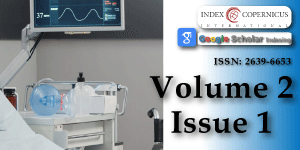Unusual presentation of a bilateral basilar stroke: Bradycardia
Main Article Content
Abstract
We report a case of 79-year-old man who presented to our emergency department (ED) for lipothymia. The patient developed significant bradycardia with hypotension. His EKG objectified a slow atrial fibrillation .the patient rapidly installed a coma. A non-contrast CT brain scan showed a bilateral vertebrobasilar ischemic stroke.
Article Details
Copyright (c) 2017 Zidouh S, et al.

This work is licensed under a Creative Commons Attribution 4.0 International License.
Campanholo KR, Conforto AB, Rimkus CM, Miotto EC. Cognitive and Functional Impairment in Stroke Survivors with Basilar Artery Occlusive Disease. Behavioural Neurology. 2015. Ref.: https://goo.gl/j3YAz8
Mehndiratta M, Pandey S, Nayak R, Alam A. Posterior Circulation Ischemic Stroke Clinical Characteristics, Risk Factors, and Subtypes in a North Indian Population: A Prospective Study. The Neurohospitalist. 2012; 2: 46-50. Ref.: https://goo.gl/Z2DZZD
Lee JS, Pyung Chun Oh PC, Koh KK. Acute ischemic stroke mimicking acute coronary syndrome. International Journal of Cardiology. 2016; 221: 560-561. Ref.: https://goo.gl/GNHqss
Bybee KA, A Prasad. Stress-related cardiomyopathy syndromes. Circulation. 2008; 118: 397-409. Ref.: https://goo.gl/c2nWzY
Voetsch B, DeWitt LD, Pessin MS, Caplan LR. Basilar Artery Occlusive Disease in the New England Medical Center Posterior Circulation Registry. Arch Neurol. 2004; 61: 496-504. Ref.: https://goo.gl/cyZtDm

